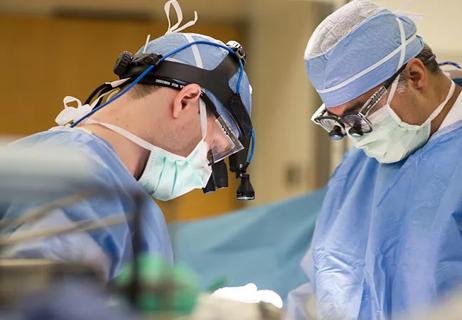The importance of emotional intelligence and empathy in operational roles

When it comes to instilling a Patients First culture, Cleveland Clinic Chief of Operations William Peacock, III, is in charge of getting the message across to a diverse group of Cleveland Clinic employees and contractors.
Cleveland Clinic is a non-profit academic medical center. Advertising on our site helps support our mission. We do not endorse non-Cleveland Clinic products or services. Policy
From police officers, to valets, construction workers and food service providers, every member of the Operations team defines their work around patient experience, Peacock says.
He recalls soon after he started in 2009 watching construction of Miller Pavilion with former President and CEO Toby Cosgrove, MD.
“One day he showed me a ‘Patients First’ badge and said, I want that on the hard hat of every construction worker on the project,” he says.
The story underscores that Patients First applies equally to system employees and contractors.
“We want people to come into a room if they’re coming for inpatient care and be wowed,” he says. “We want to do the little things that are significant. We make sure when they’re crossing the street, police officers are friendly and visitors feel safe. We want to make sure the valet driver is polite and on time, and that food is served by caregivers who are enthusiastic.”
For Peacock’s team, it comes down to recruiting the right people, commitment to extensive training and, in some cases scripting how caregivers should deal with people and situations.
The Clinic police and security operation, for instance, seeks officers from area communities because they relate well and are often familiar with visitors and patients.
Gordon Snow, chief of protective services, ensures that police officers strike a balance between being welcoming but not creating a security fortress, Peacock says.
“They are very selective about who they hire,” he says. “ We try to bring in a lot of community police officers from the markets we serve. It connects us to the people who come here for care. These are police officers who know their communities and are part of the fabric of the communities they serve.”
In food services, Operations works closely with contract partners Aramark and Morrison on service techniques. Peacock says meals must be delivered hot and on time. On a campus the size of main campus, that can be a challenge.
“In order to keep food warm, we decided to disperse our kitchens to different floors to minimize time of delivery and minimize temperature loss,” he says.
Improving patient food and presentation is an ongoing mission, he says. He notes new menu service on cardiac floors of Miller Pavilion. Fresh produce and ingredients are prepared as they are in some of Cleveland’s finest restaurants.
Training for environmental services includes caregivers taking turns each week to review and evaluate each other on the cleaning process. The team also uses ”Tide testing” to track cleaning efficacy. In that scenario, a leader applies Tide laundry detergent to high-touch surfaces such as bed rails, light switches and tray tables. After cleaning is complete, the leader uses a UV light to see where surfaces were not adequately cleaned. Five to six rooms are tested every day.
Food services and environmental services workers come into contact with patients as much as anyone. They must be highly tuned to their interactions and impressions they make.
“It’s pretty amazing to me, particularly with some of our environmental services workers, the extra steps they go through to show their emotional intelligence to patients on floors where we treat the sickest of the sick patients,” Peacock says.
He emphasizes empathy — understanding that patients lose a sense of privacy with caregivers coming and going throughout the day.
“It’s important they realize they are creating another interruption at a time the patient is supposed to be resting,” he says. “We have a lot of conversations about cleaning. I’ve scrubbed up and gone into a room to see how they clean, to participate in cleaning with them, and talk to them about what conversations they have with patients. How do they introduce themselves? How do they know if it’s not the right time? What words of encouragement can they use with someone who may be alone?”
Operations also works with the clinical institutes on purchasing supplies and medical devices. Purchasing an orthopedic implant, for instance, is not like purchasing a car part. The individual needs of patients come into play.
“It’s important for us to know where that knee is going, where that hip is going,” Peacock said. “We work with orthopaedics to make the right buys that have both the efficacy and efficiency of cost, and will be the right thing for the patient.”
To learn more about Cleveland Clinic business operations from a global perspective, enroll in one of our Global Executive Education programs.

Cleveland Clinic will offer rapid, pinpoint airborne transport of medications and other medical items

Dedicated committee and surgical fellowship strive for sustainability, energy efficiency, waste reduction

Next-generation mRNA vaccines are among the advancements likely to change healthcare this year

$50 million pledge will help remove sources of lead exposure from Cleveland homes

How to empower caregivers and engage patients in patient safety

Summit to cap off with Annual Top 10 Medical Innovations

The spine surgeon will oversee more than 125 staff physicians in his new role

Merlino rejoins Cleveland Clinic to help execute bold strategic vision